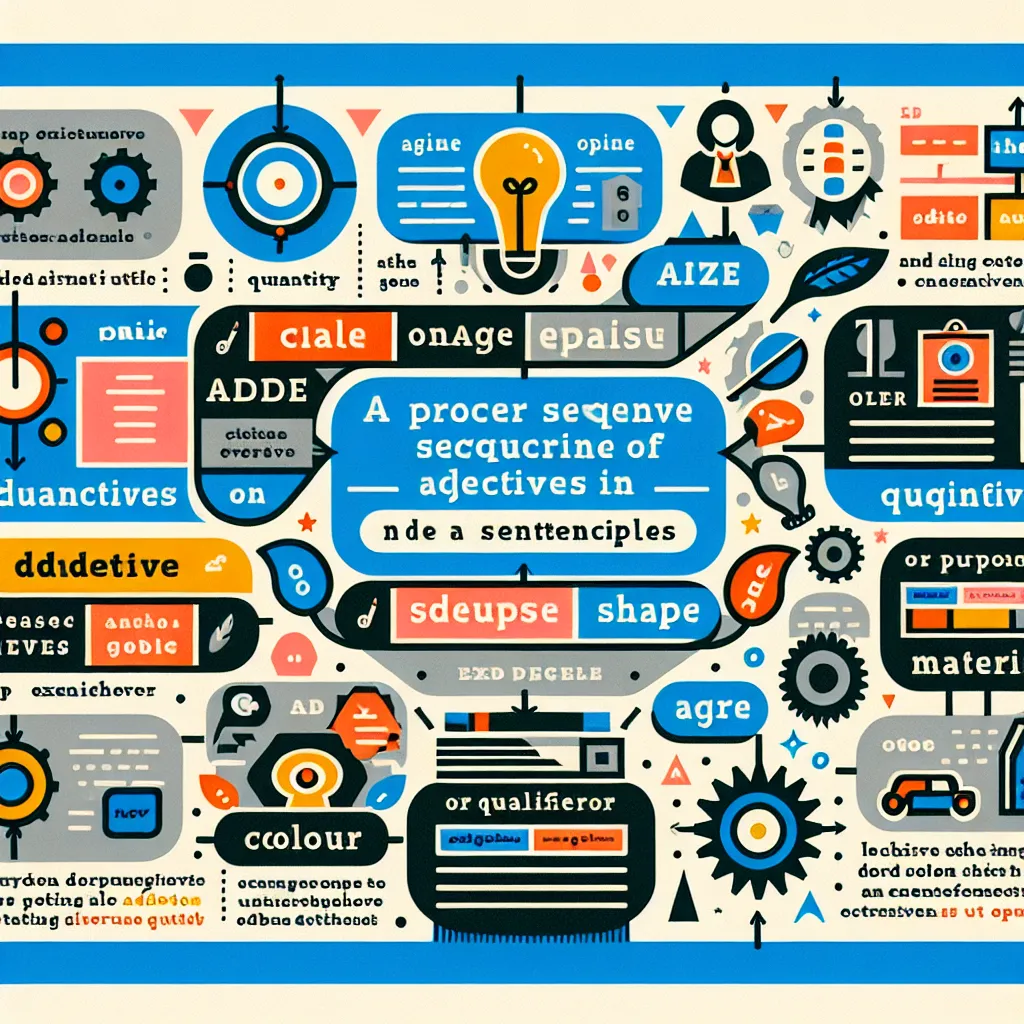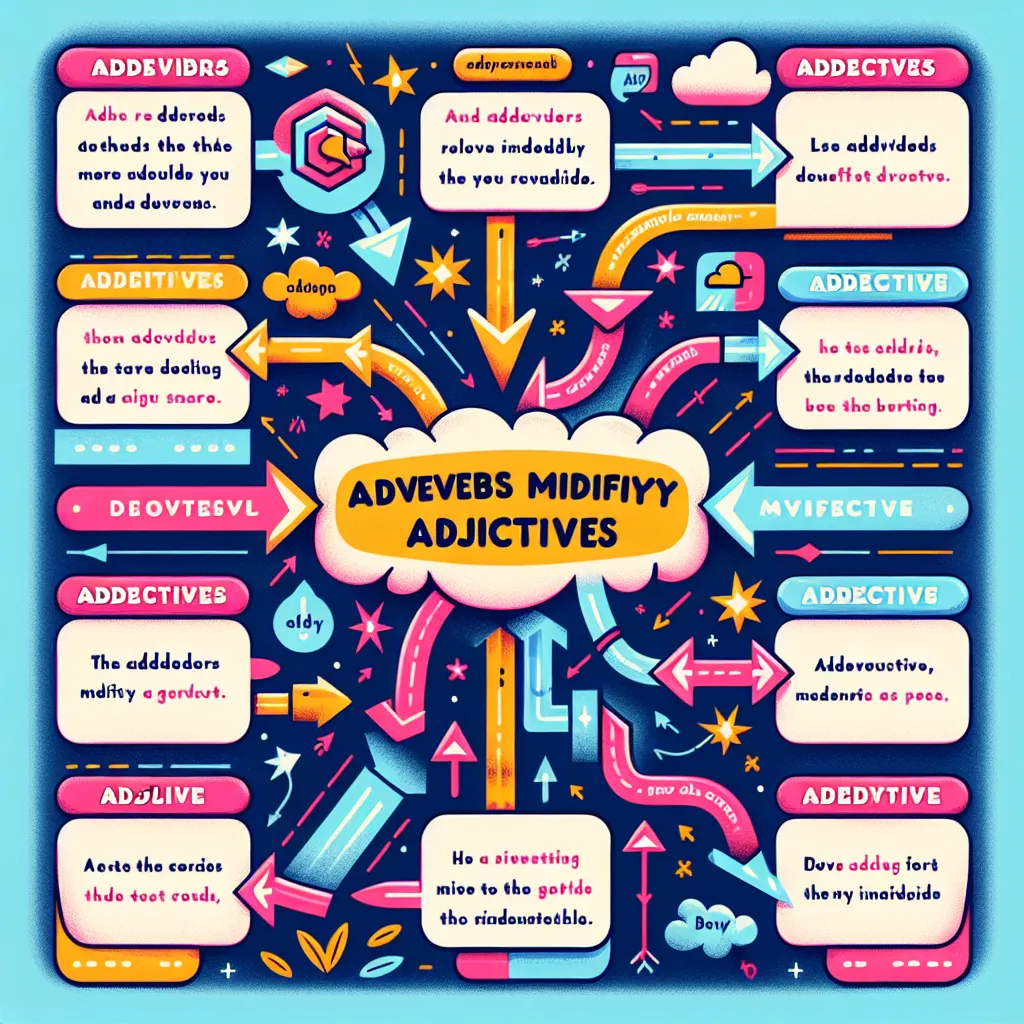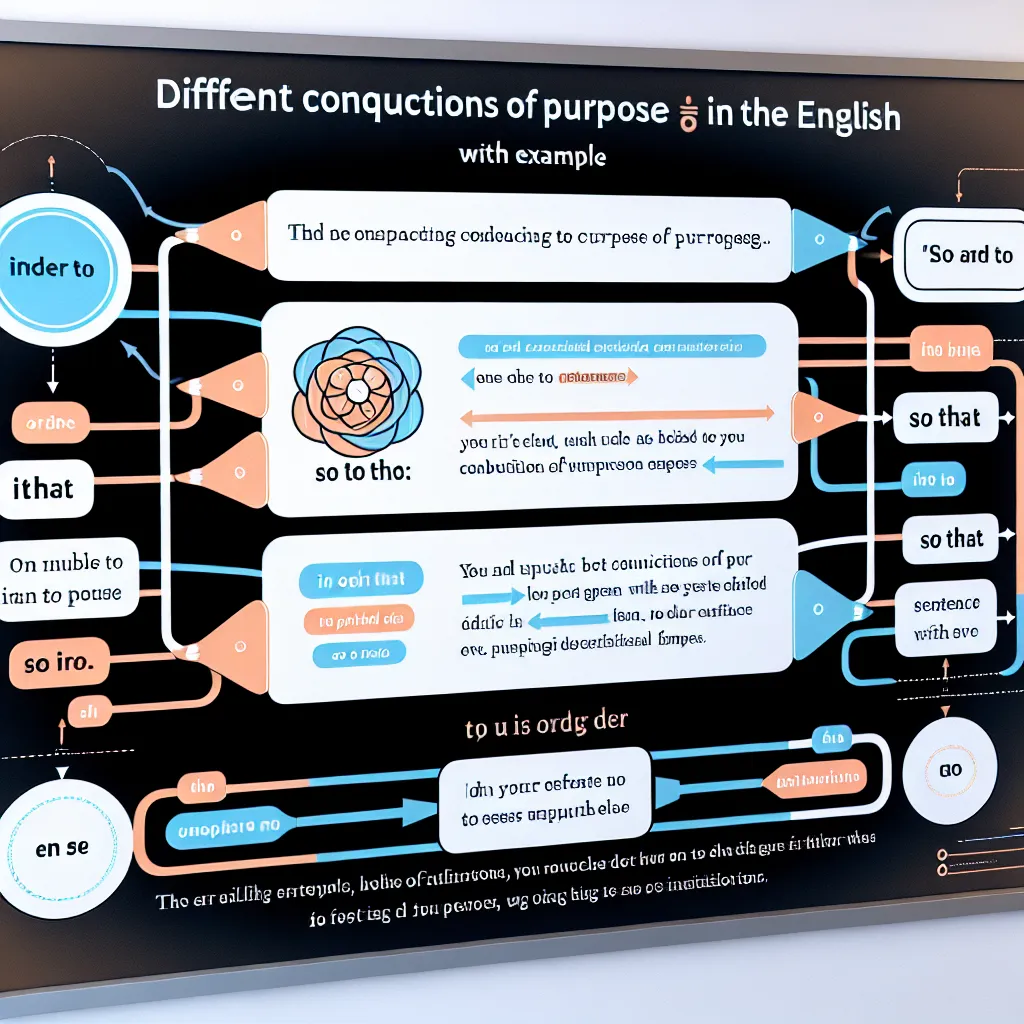Have you ever wondered why “big red ball” sounds natural, but “red big ball” feels off? The secret lies in the art of adjective order, a crucial aspect of English grammar that can elevate your language skills from good to great. In this comprehensive guide, we’ll explore Advanced Tips For Adjective Order, helping you fine-tune your English and impress native speakers with your precision.
Understanding the Importance of Adjective Order
Adjective order is more than just a grammatical rule; it’s an intuitive aspect of English that native speakers use without conscious thought. For non-native speakers, mastering this concept can significantly enhance their fluency and naturalness in communication.
The Basic Rules of Adjective Order
Before diving into advanced tips, let’s quickly review the standard order of adjectives:
- Opinion
- Size
- Age
- Shape
- Color
- Origin
- Material
- Purpose
For example: “A beautiful (opinion) large (size) antique (age) round (shape) brown (color) Italian (origin) wooden (material) dining (purpose) table.”
 English Adjective Order Chart
English Adjective Order Chart
Advanced Tips for Perfecting Adjective Order
1. Understanding Exceptions to the Rule
While the basic order is a good starting point, there are exceptions:
- Emphasis: Sometimes, you might want to emphasize a particular quality by placing it first. For example, “The rusty old car” puts more emphasis on the car’s condition than “The old rusty car.”
- Compound Adjectives: When two adjectives combine to form a single idea, they usually come before other adjectives. For example, “A light-blue vintage dress.”
2. Mastering the Use of Cumulative and Coordinate Adjectives
Cumulative adjectives build upon each other and must be in a specific order. For example, “The big red ball” (size then color).
Coordinate adjectives can be reversed or separated by “and” without changing the meaning. For example, “The happy, excited child” or “The excited and happy child.”
To distinguish between the two, try inserting “and” between the adjectives. If it sounds natural, they’re coordinate adjectives.
3. Navigating Cultural and Subjective Adjectives
Some adjectives, particularly those related to culture or subjective qualities, can be tricky to place. For instance, “exotic” could be considered an opinion or an origin adjective depending on context.
Tip: When in doubt, place subjective or cultural adjectives closer to the beginning of the sequence.
4. Handling Multiple Adjectives from the Same Category
When using multiple adjectives from the same category, native speakers often use commas or “and” to separate them. For example:
- “A long, winding road” (two shape adjectives)
- “A red and blue flag” (two color adjectives)
5. Incorporating Adverbs with Adjectives
Adverbs can modify adjectives, adding another layer to adjective order. Generally, adverbs come before the adjectives they modify:
- “An incredibly beautiful antique vase”
- “A surprisingly large old house”
 Adverb-Adjective Combination Examples
Adverb-Adjective Combination Examples
6. Dealing with Participles as Adjectives
Participles (verbs used as adjectives) usually come after descriptive adjectives but before purpose adjectives:
- “A beautiful sparkling diamond ring”
- “An exciting new learning opportunity”
Practical Exercises to Reinforce Adjective Order
To truly master these advanced tips, practice is key. Here are some exercises to help you internalize these rules:
-
Sentence Reconstruction: Take complex sentences with multiple adjectives and rearrange them in the correct order.
-
Creative Writing Challenges: Write descriptions using as many adjectives as possible while maintaining correct order.
-
Error Identification: Analyze texts or speeches to spot incorrect adjective orders and correct them.
-
Translation Exercises: Translate sentences from your native language to English, focusing on adjective placement.
Common Pitfalls to Avoid
Even advanced learners can stumble when it comes to adjective order. Here are some common mistakes to watch out for:
- Overusing adjectives: While descriptive language is great, too many adjectives can make your speech or writing feel cluttered.
- Misplacing opinion adjectives: Remember, opinion adjectives almost always come first.
- Forgetting about compound adjectives: Treat compound adjectives as a single unit in the adjective order.
Moving Beyond the Basics
Once you’ve mastered these advanced tips, you can start to play with language more creatively. Native speakers often bend these rules for effect in literature, poetry, and casual speech. Understanding when and how to do this comes with practice and exposure to native content.
For more insights on improving your English grammar skills, check out our guide on how to use advanced sentence modifiers.
Conclusion
Mastering adjective order is a subtle yet powerful way to enhance your English proficiency. By internalizing these advanced tips and practicing regularly, you’ll find your English becoming more natural and sophisticated. Remember, like any aspect of language learning, perfecting adjective order takes time and practice. Be patient with yourself, and soon you’ll be describing the world around you with the precision and fluency of a native speaker.
We’d love to hear about your experiences with adjective order. Have you encountered any particularly challenging situations? Share your thoughts in the comments below, and don’t forget to explore our other articles on advanced English grammar for more in-depth learning.




